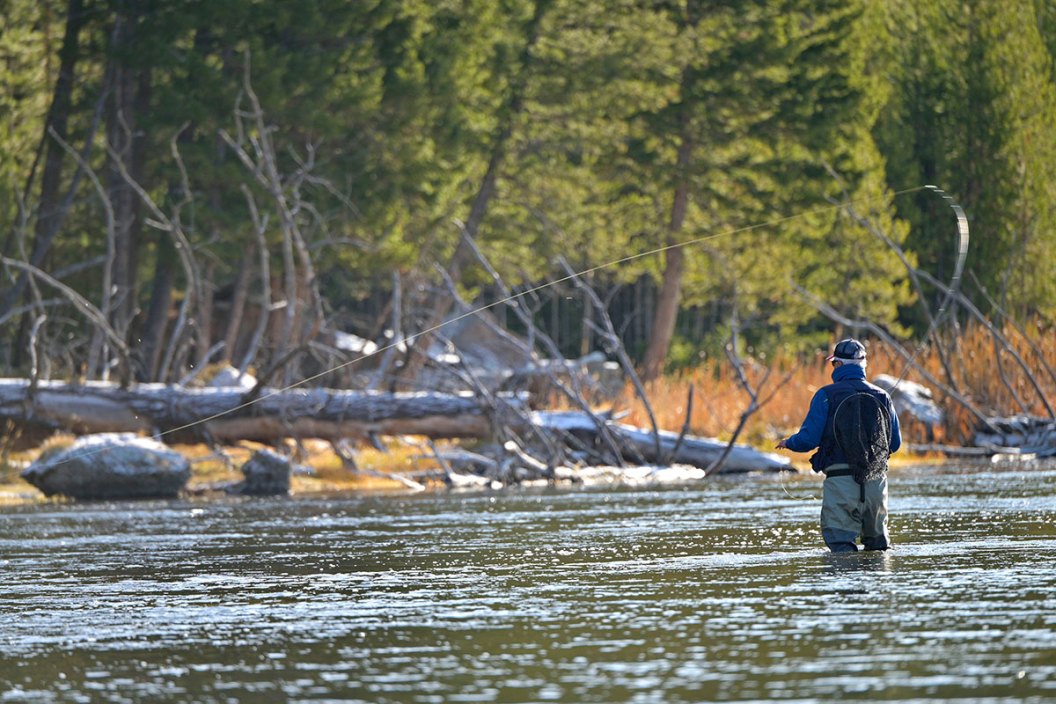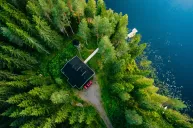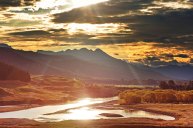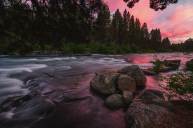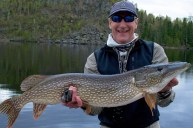If you've ever seen "A River Runs Through It," then you'll want to visit these stunning locations.
If you ask people "What's the best fishing movie?" enough times, you'll probably hear a common response.
The Robert Redford film "A River Runs Through It" debuted way back on October 9, 1992. It starred Brad Pitt, Craig Sheffer, and Tom Skerritt playing the Reverend Maclean. This great movie is revered for its life lessons based on the art of fly fishing, as well as the importance of good film structure for a book adaptation.
The film follows the lives of Paul and Norman Maclean as their father tries to raise his two sons in some of the most scenic fishing areas the world has to offer, and it was all filmed in spectacular locations. Based on the novella by Norman Maclean himself, "A River Runs Through It" nails the experience and beauty of fly fishing for wild trout amongst some of the most pristine and beautiful backdrops in North America.
The film is replete with extensive fishing scenes that were filmed largely in Montana. Specifically, filming took place in Paradise Valley on the Yellowstone River, and south of Bozeman on the Gallatin River. They were all meant to be based on fishing in the Big Blackfoot River.
Should you feel the urge to take a look at these places and the fishing they offer to anglers from around the world, here's a quick guide to the filming locations of "A River Runs Through It."
Montana
The 41st U.S. state is bordered by the Canadian provinces of Alberta, British Columbia, and Saskatchewan to the north, Idaho sits to her west, with North Dakota and South Dakota to the east. Wyoming is on its southern border. Montana may be the fourth largest state by area, but it has the eighth fewest people.
It also contains a large part of the Rocky mountain range.
Part of the Montana river system is considered the Pacific Ocean drainage basin and includes the Clark Fork of the Columbia River, the Blackfoot River, the Bitterroot River, the Flathead River, the Pend Oreille River, and the Kootenai River.
Montana has over 3,000 named lakes and reservoirs and is home to a veritable sportsmen's paradise beyond compare. Montana has tremendous big game hunting possibilities with fall hunting seasons for everything from elk and pronghorn antelope, to whitetail deer and mule deer.
There are limited number of permits for moose, mountain goats and bighorn sheep, a spring hunting season for black bear and in most years, limited hunting of bison. But it is the world class fly fishing that draws anglers from around the globe.
The Gallatin River
Regarding the movie filming, 2 Guys and a River said that, "Most of the fly fishing scenes were filmed on the Gallatin River in the Gallatin Canyon south of Bozeman." Fly fishing guru Gary Borger, who was hired to be a consultant on the film, had also brought his son Jason along as a flycasting expert.
Jason Borger "did almost all the fly casting for the actors in the movie. This includes the memorable "shadow-casting" that Paul Maclean performed while standing on a big rock in the middle of the river."
The Gallatin River starts at Gallatin Lake, which is located high in the mountains of the Gallatin Range in Yellowstone National Park. This amazing fly fishing destination flows for 100 miles to where it meets the Missouri River in Three Forks, but it's about twelve miles long from its origin at the confluence of the West and East Gallatin rivers.
Game fish opportunities include brown trout, mountain whitefish, and rainbow trout although there are many species of gamefish present along the way: brook trout and Yellowstone cutthroat trout among them.
According to Fins and Feathers, "A well-stocked fly box for the Gallatin River should include some basics like the Beadhead Prince, Copper John, Pat's Rubberleg, and Pheasant Tails." They also report that insect life along the Gallatin River is diverse and healthy, in part due to the clean, cold water that flows into the river from the hundreds of small streams that feed it.
Stoneflies, caddis flies, mayflies, crane flies, and midges round out the aquatic life that trout can't resist. Terrestrial insects (and imitations) such as grasshoppers, ants, and beetles are the order of the day by mid-August and September.
The Big Blackfoot River
The Blackfoot River begins in Lewis and Clark County at the Continental Divide, with the river's headwaters are between Rogers Pass and Stemple Pass to the south. The upper half of the Blackfoot cuts across southwest Montana from Lincoln to Ovando before running into the Clark Fork near Missoula.
Blackfoot River Outfitters talks about the esteemed river with an eye towards the poetic, saying, "The Big Blackfoot River's bottomless emerald pools, boulder strewn pocket water and diamond chop riffles all shaded by moss covered cliffs and towering ponderosa pines combine to make this the epitome of Montana fly-fishing."
The veteran outfitting guide service doesn't mince any words when they talk about fishing the great river. They claim that nymphing the Blackfoot is just plain deadly, especially from a boat. Fishing pressure on the famous waterway still remains relatively light to this day.
Look for native cutthroat trout to inhale your dry fly, with some very willing rainbows and browns to fill your creel as well. The Blackfoot also holds native populations of bull trout.
The 75 miles of river "starts deep in the Bob Marshall wilderness with the clear cold North Fork spilling over the Ovando Montana plain to mix with the warmer main stem Blackfoot river coming out of the north near Lincoln Montana," says the venerable Missoula River Lodge.
Since the days of the Maclean brothers and their trusty fly rods, these amazing vistas have turned into filming locations, and filmmakers like director Robert Redford have shared the natural beauty in the Montana Rockies, so skillfully captured by cinematographer Philippe Rousselot.
While Hollywood can never replace such stunning areas of our beautiful country, they can capture it on film and share the Big Sky with fly fishermen everywhere. Now it's up to you and I to make the most of it by planning a trip, packing our fly rod, and getting on the road.
Looking for a little more or even hot lunch for your hunting blind? Follow my webpage, or on Facebook and Twitter.
NEXT: 12 BEST TROUT FISHING DESTINATIONS IN COLORADO
WATCH
